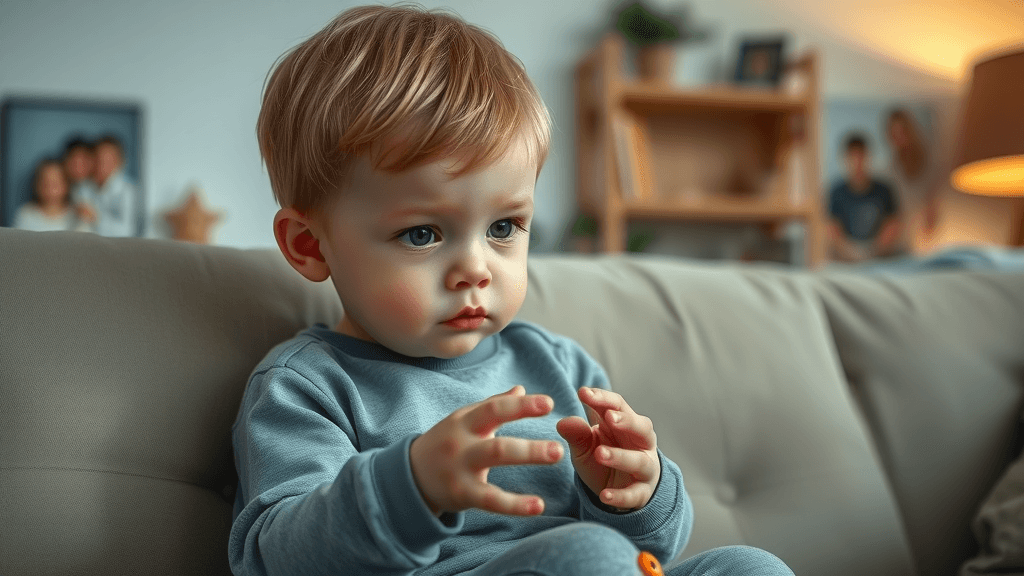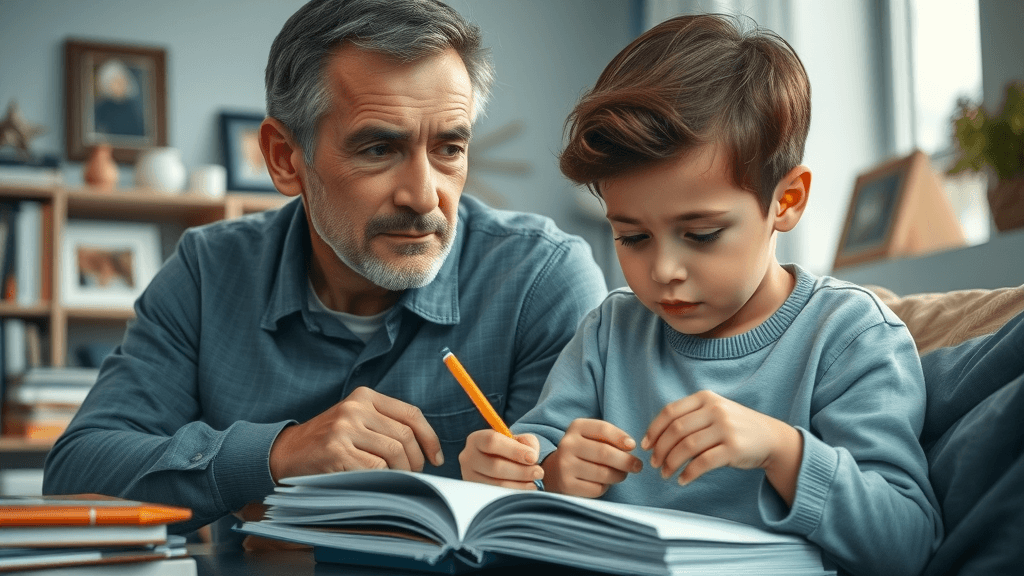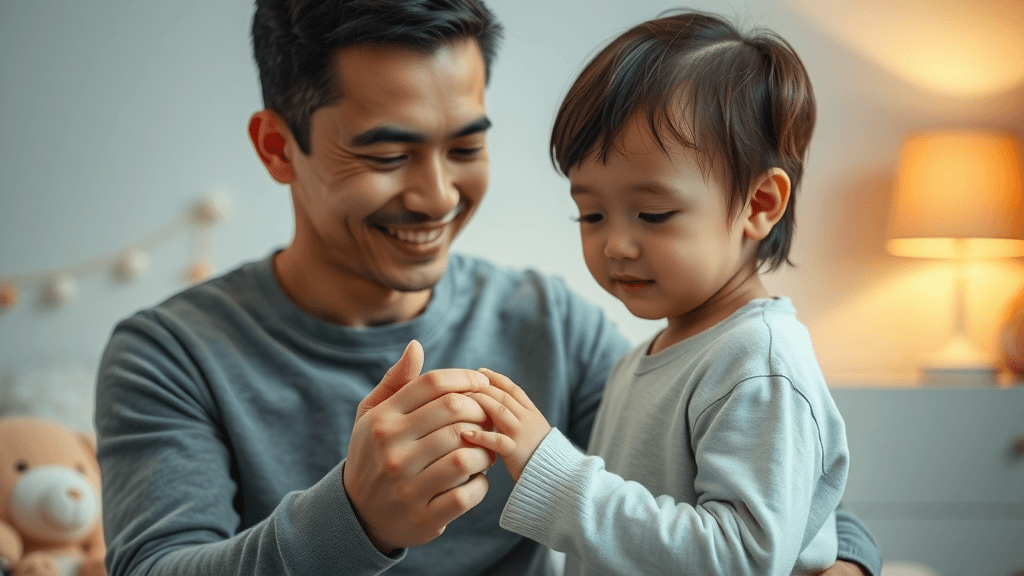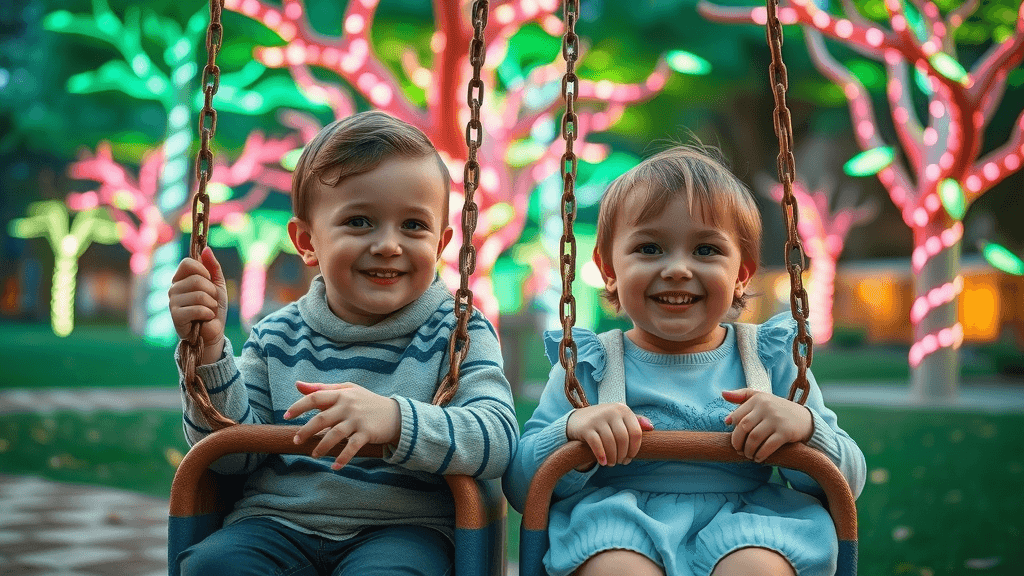Did you know? Nearly half of all American children will witness their parents’ divorce, andchildren of divorce are 2-3 times more likely to experience mental health issuescompared to their peers.That’s not just a statistic—it’s a wake-up call. If you’re a parent grappling with the challenges of divorce, you’re not alone, and more importantly, help is within reach. In this in-depth, compassionate guide, we’ll break down the realities of divorce and children to empower you to protect your child’s well-being and help your family thrive after separation.
Divorce and Children: Understanding the Real Impacts (Startling Statistics Revealed)

-
According to recent studies in the United States, children of divorceare over 50% more likely to need mental health services than those from intact families.
-
Behavioral problemsand academic challenges increase directly after parental separation. Children may show drops in grades or struggle with attention at school.
-
Emotionally, up to 25% of children of divorcecontinue to experience problems with anxiety and depression several years after the divorce, compared to just 10% of their peers from two-parent homes.
-
Living arrangementsand time with each parent can directly influence how kids cope with divorce and adapt to new family dynamics.
“Children of divorce are 2-3 times more likely to have mental health issues compared to their peers.” — Journal of Child Psychology
Why Discuss Divorce and Children? Importance of Early Intervention
The effects of divorce and childrenare not just short-lived; they can influence a child’s emotional stability and mental health for years, even shaping the adults they become. Early intervention is key. Recognizing warning signs—like behavioral problems, sudden mood changes, or social withdrawal—can empower divorced parentsto step in before issues become deeply rooted. Understanding that kids’ responses vary by age and temperament also allows for more tailored support, reducing the risk of long-term trauma.
Bringing this topic into open conversations helps parents and kids feel less alone, encourages proactive care, and highlights the fact that, with the right guidance, most children of divorce do find a path to resilience and happiness.
What You’ll Gain: Insights for Navigating Divorce and Children’s Needs
-
How divorce affects children at different developmental stages
-
Critical factors to be a supportive and good parent during divorce
-
Actionable steps for maintaining children’s mental health
-
Strategies for moving forward after divorce as a family
-
Frequently overlooked effects and prevention tips

Understanding Divorce and Children: Age-Specific Impacts and Mental Health Risks
|
Age Group |
Mental Health Risks |
Academic Impact |
Emotional Stability |
|---|---|---|---|
|
Infants (0-2) |
Attachment issues, sleep disruption |
None at this stage |
Increased irritability |
|
Toddlers (2-5) |
Anxiety, regression (e.g., bedwetting), tantrums |
Difficulty with daycare routines |
Clinginess, emotional swings |
|
School-age (6-12) |
Worry, guilt, declining self-esteem |
Drop in grades, attention issues |
Sadness, anger, behavioral problems |
|
Teens (13-18) |
Depression, acting out, risk-taking |
Lower academic achievement, truancy |
Withdrawal, resentment |
Regardless of age, every child is vulnerable to the emotional upheaval that divorce means. By paying close attention to these specific risks and tailoring your approach to your child’s developmental stage, you help your kids copemore effectively and address problems before they escalate.
Mental Health Effects: Warning Signs Parents Should Recognize

Common warning signs that a child is struggling with the changes divorce brings include sudden changes in sleep or eating patterns, persistent sadness or irritability, decline in academic performance, or withdrawal from friends and family.
Adolescents, in particular, may act out or engage in risky behavior as a way to express distress. Clinical psychologists urge parents to stay alert to subtle shifts, such as a sharp drop in self-confidence or increased hostility. While many behavioral problems are normal adjustments to stress, if they continue beyond six months after the divorce, it may be time to seek professional mental healthsupport.
How Age and Developmental Stage Influence Divorce Outcomes
Young childrenare most affected by disruptions to daily routines and may react with fear or confusion when parents become single parents. At this stage, consistent caregiving and reassurance from both mom and dad, when possible, helps prevent long-term anxiety.
Teens, while often appearing more independent, experience divorce and childrenin nuanced ways—internalizing guilt or anger and sometimes blaming themselves. Studies show that outcomes improve dramatically when divorced parentsprioritize open communication and allow teens space to process the life change, seeking professional intervention if needed.
The Good Parent Principle: Supporting Children Positively Through Divorce
-
Listening and validating children’s emotions:Make time only for your kids without distractions. Hearing your kids and accepting their feelings, even if they’re angry or confused, gives your child the sense that they matter.
-
Maintaining consistent routines for stability:Kids feel safer when family routines—bedtimes, school, meals—stay unchanged despite the divorce. Routines help maintain a sense of normalcy.
-
Role modeling healthy coping skills:Show your children how you manage your own emotions. Whether it’s taking a walk, talking with a therapist, or just stepping back to process, modeling appropriate responses goes further than you think.

Becoming a Good Parent During Divorce: Practical Tips and Examples
A good parentremains emotionally available throughout the turbulence of divorce. Simple actions, like having regular “check-in” moments, validating your child’s worries, and keeping promises, form the framework of security that kids need.
For example, if your child says, “I don’t want to go to dad’s house,” respond with empathy: “I hear that this is hard for you. What’s worrying you about staying there?” Use these moments to give your childstrategies for managing transitions—such as letting them bring a comfort item between homes or scheduling fun activities when they feel ready.
“Being present for your child is a powerful act of love during times of uncertainty.”
Communicating About Divorce and Children: What Works Best
-
Age-appropriate language for talking about divorce
-
Managing conflict and setting healthy boundaries
-
When to seek help from counselors or therapists
Honest, gentle conversations at your child’s level are crucial. Explain the basics: “Mom and dad both love you, but we’ve decided we’ll be happier living in different homes.” Avoid blaming language or arguing in front of the kids. A unified message from both parents, even if just about logistics, goes a long way toward helping kids cope with divorce.
If high conflict or complex emotions are present, or your child shows persistent warning signs, don’t hesitate to involve a clinical psychologist, counselor, or support group for specialized help.
Answering Difficult Questions: Honesty and Reassurance
Children are naturally curious, and their questions—“Is it my fault? Will we be a family again?”—requires honest, age-appropriate answers. Always reassure them that the divorce is not their fault, that both parents still love them, and that their feelings are important for kids to express.
Use stories, books, or even therapeutic play to help your child process complex emotions. Above all, let them know that their family home may be changing, but their sense of safety and love will remain.

At what Age Does Divorce Affect Children the Most?
The impact of divorce and childrenis profound at any age, but sensitive developmental windows—especially between ages 6 and 12, when kids are forming identity and peer relationships—are often the most vulnerable. During this timeframe, disruptions can lead to issues with self-esteem, academic performance, and social interactions.
However, with early intervention and ongoing support from good parentsand a reliable network, kids can overcome these challenges and even emerge more resilient.
Research Insights on Mental Health by Age
Research from the United States and beyond consistently finds that school-age childrenexperience the greatest distress after parental divorce, especially if conflict is ongoing or living arrangements are unsettled. Teens, meanwhile, may hide their struggles, feeling embarrassed or eager to assert independence.
While the risk of negative outcomes is real, the good newsis that the majority of children with involved, caring parents and access to child supportresources adjust successfully within 1-2 years.
How to Deal with Divorce When You Have Kids: Step-by-Step Strategies

-
Open and honest family discussions
-
Separate marital conflict from co-parenting
-
Involve other supportive adults
-
Prioritize self-care as a parent to model resilience
Successful navigation through divorce as parents and kids starts with open communication. Regular family meetings allow children to voice concerns and help kids feelincluded in the process. Decouple marital arguments from co-parenting duties; never argue in front of the kids. Secure backup by involving trusted relatives, school counselors, or friends to keep your child’s support network strong.
Finally, remember: looking after your mental health is not selfish. By practicing self-care, you show your children what healthy coping looks like, helping them stay resilient during this major life change.
Good Parent Actions: Do’s and Don’ts in High-Conflict Situations
Do:Stay calm and in control during heated interactions; children mirror your emotional regulation. Affirm your child’s love and reinforce the message that both parents are there for support.
Don’t:Criticize the other parent in front of the kids or use children as messengers. Avoid making children choose sides or feel responsible for adult problems. Above all, always prioritize what’s important for kids—their peace, routine, and sense of belonging.
What Do Kids Need During a Divorce? Meeting Emotional and Mental Health Needs
-
Stability in home and school routines
-
Time for grief and adjustment
-
Reassuring unconditional love from both parents
To help kids cope with divorce, prioritize routine and security—school drop-offs, bedtime rituals, and regular meals signal that not everything has changed. It’s natural for children to feel sadness or anger; allow space for those emotions and reaffirm that their feelings are valid.
Most importantly, both parents—whether together or in a single-parent household—must shower their children with reassurance and affection. Remind your child daily that your love is not conditional on the family’s structure.
Mental Health Support: Signs It’s Time to Seek Professional Help
Sometimes love and routine aren’t quite enough. Watch for persistent changes—sleep issues, regression to earlier behaviors, or a drop in grades lasting more than six months. If your child’s sadness seems overwhelming or they express hopelessness, reach out to a clinical psychologistor licensed counselor.
Remember, seeking outside help is an act of parental wisdom, not defeat. Early intervention can help kids get back on trackand build coping skills for future challenges.
|
Checklist: Signs of Emotional Distress in Children Post-Divorce |
Actions to Take |
|---|---|
|
Loss of interest in friends/activities |
Check in daily; plan a special time together |
|
Persistent sadness or anger |
Validate feelings; consider therapy |
|
New academic problems |
Communicate with teachers; offer homework routines |
|
Physical complaints (headaches, stomachaches) |
Consult a pediatrician to rule out medical issues |
|
Extreme reactions to transitions |
Use comfort rituals; prepare for change in advance |

What Damage Does Divorce Do to a Child? Truth vs. Myths
-
Short-term vs. long-term trauma symptoms
-
Distinguishing temporary setbacks from chronic mental health risks
-
Role of parental conflict in child outcomes
Not all children of divorcewill experience lasting trauma, but almost all will endure short-term disruptions: trouble sleeping, anxiety, or behavioral issues. Prolonged, chronic problems typically result when there is continuous conflict, lack of support, or little time with each parent.
Myth: “All children of divorce have lifelong issues.” Fact: With positive intervention, the majority rebound, especially when both parents are actively nurturing. Child supportfrom both mom and dad—emotional as much as financial—makes a real difference in outcomes.
Long-Term Outcomes: What the Latest Research Shows
Recent data reveal that most children of divorcedemonstrate healthy adjustment by adulthood if exposed to stable parenting and new routines. Where chronic issues persist, it is often in the context of ongoing parental conflict, poverty, or significant disruption in living arrangements.
Resolving conflict privately and seeking joint solutions—such as collaborative co-parenting agreements—are key to minimizing long-term risks and fostering resilience.
“Most children demonstrate resilience when provided with the right support network.”
Protecting Mental Health: Building Resilience During and After Divorce
-
Promoting secure attachments with both parents
-
Encouraging social connections and new routines
-
Utilizing child therapists and counselors

Help your children build resilience by fostering strong attachments with both parents—even if the family homehas changed shape. Encourage your kids to maintain friendships and participate in familiar activities. New routines, like weekly traditions or special outings, help kids stay hopeful for the future instead of focusing on loss.
When necessary, don’t hesitate to involve professional support. Even one session with a good therapist can help children feel heard and empowered to express their needs.
Good Parent Checklist: Nurturing Resilience in Children
-
Stay emotionally available—let your kids know they can talk to you anytime.
-
Encourage regular contact with the other parent, regardless of your feelings.
-
Communicate changes in advance so kids have time to prepare.
-
Involve your child in decisions about bedroom setup or scheduling to give your childa sense of control.
-
Applaud their coping skills and celebrate small victories together.
Moving Forward: Healing, Growth, and Adjusting to New Family Dynamics
-
Celebrating positive milestones after separation
-
Redefining success as a post-divorce family
-
Supporting your child’s long-term goals

Moving forwardafter divorce means honoring family milestones in new ways—celebrate your child’s achievements, first days at a new school, or the creation of new traditions. The definition of family may shift, but the heart of what keeps kids healthy and moving forwardremains the same: love, flexibility, and support for their dreams.
By inviting your child into the process and showing that happiness is still possible, you model the powerful message that life after divorce can be rich, rewarding, and full of new opportunities.
Moving Forward with Confidence: Success Stories and Real-Life Examples
Families who thrive post-divorce focus on unity—maybe that’s shared meals, attending games as a blended group, or supporting each other’s milestones. For example, one single parentinstituted “family planning night” every Sunday, allowing kids to help plan activities for the week. Another family celebrates two Thanksgivings, giving kids more time with each parent and a wider sense of belonging.
These stories prove that, with the right support, children will not only cope with divorce, but can also grow from it—gaining new skills, relationships, and perspectives.
Top Tips for Parents Managing Divorce and Children
-
Prioritize open, ongoing communication
-
Remain a good parentby supporting emotional needs
-
Monitor for subtle mental healthchanges
-
Keep routines steady
-
Empower children to express feelings safely
Common Myths vs. Facts About Divorce and Children’s Mental Health
-
“Kids are always better off when parents stay together” — debunked:High-conflict marriages harm children just as deeply as divorce. Peaceful, cooperative parenting—even in separate homes—creates a healthier environment.
-
“All children will have serious issues post-divorce” — explored:While some struggle, most kids copewell with adequate support and time.
-
How parental involvement makes a difference:Consistent love, attention, and presence from both mom and dadsignificantly reduce negative outcomes after divorce.

Expert Advice for Safeguarding Children’s Mental Health During and After Divorce
“Consistent, caring parental involvement is the single best predictor of a child’s resilience post-divorce.” — Family Therapist
-
Collaborative co-parenting techniques
-
Guidance on when professional intervention is needed
Experts recommend that, even when divided, parents should act as allies in promoting their child’s well-being. Joint decision-making, agreed house rules, and respectful communication between divorced parentscan protect children from mixed messages and chronic stress. If you’re struggling to agree, enlisting a mediator or family counselor may help set boundaries and routines that put kids first.
Trust your instincts—if your child’s distress persists, early professional support is the best path to healing.
Resources and Further Reading on Divorce and Children
-
National mental health organizations
-
Books recommended by child psychologists
-
Online support groups for parents and children
Frequently Asked Questions on Divorce and Children
-
Can divorce ever have a positive effect on children?
Yes, especially if the previous home was filled with conflict or tension. Divorce can reduce stress in the family home, and many children thrive with supportive, attentive parents who model positive coping skills. -
What are the signs my child isn’t coping well?
Persistent sadness, anger, trouble sleeping, sudden changes in behavior, poor grades, or social withdrawal can signal that your child needs more support. -
How long does it take for kids to adjust after a divorce?
Most children adapt within 1-2 years, especially with strong parent-child relationships and consistent routines. -
How to get additional support?
Seek a clinical psychologist, engage with mental health organizations, or join local and online support groups tailored to divorced parentsand children of divorce.
Moving Forward Together: How Good Parenting Can Prevent Lasting Trauma
-
Key takeaways for protecting your child’s mental health
-
The role of hope, communication, and family connection
-
Encouraging growth and resilience after divorce
Take small steps: listen, love, and maintain routines. Foster open communication, nurture hope, and cooperate as co-parents to help your children emerge not only unharmed but stronger. With your support, the path beyond divorce can be full of opportunity.

